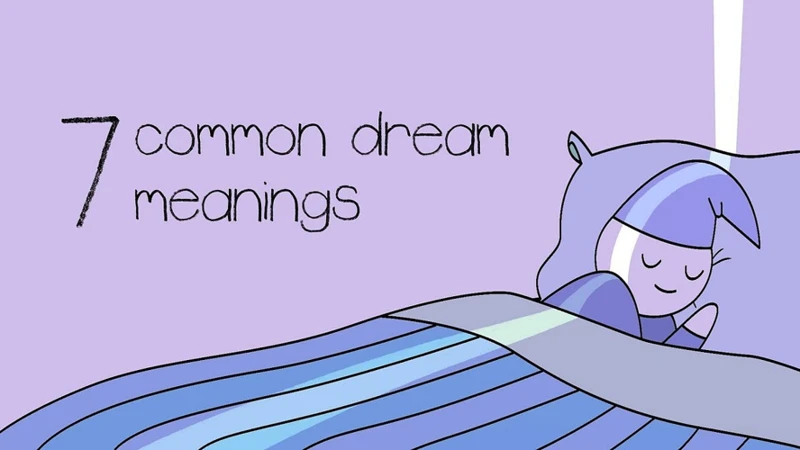Have you ever woken up from a dream feeling a bit confused and embarrassed, with damp sheets? You’re not alone. The phenomenon known as a wet dream, or nocturnal emission, is a natural occurrence that has intrigued and puzzled individuals throughout history. In this article, we will delve into the meaning of a wet dream – its definition, common occurrence, and cultural perspectives. We will also explore how wet dreams can be interpreted psychologically, sexually, and emotionally, as well as examine their physiological and psychological effects. Additionally, we will address common misconceptions surrounding wet dreams, interfering factors, and the fascinating concept of lucid dreaming and control. So let’s unravel the mysteries and discover the truth behind this intriguing nocturnal experience.
Understanding Wet Dreams

A wet dream, also known as a nocturnal emission, is a phenomenon where a person experiences ejaculation or orgasm during sleep. It typically occurs during REM (rapid eye movement) sleep, a stage of sleep associated with vivid dreaming. The exact cause of wet dreams is still debated among experts, but it is believed to be a natural bodily function associated with sexual maturation and hormone levels. These dreams often involve sexual scenarios or fantasies and can result in the release of semen in males or vaginal lubrication in females. The experience can be both surprising and confusing, especially for those who are unaware of the phenomenon or have limited knowledge about it.
Wet dreams are a relatively common occurrence among both males and females. Although they are more frequently reported during puberty, they can also happen throughout adulthood. It is estimated that about 83% of men and 37% of women have experienced at least one wet dream in their lifetime. The frequency of wet dreams can vary widely among individuals, with some experiencing them on a regular basis and others rarely or not at all. Factors such as hormonal levels, overall sexual activity, and personal circumstances can influence the frequency of wet dreams. It is important to note that the occurrence of wet dreams does not imply any underlying health issues or abnormality.
Throughout history, wet dreams have been interpreted and viewed differently across cultures. In some cultural and religious traditions, wet dreams have been considered taboo or sinful, leading to feelings of guilt and shame. These negative associations can stem from societal expectations, religious teachings, or cultural beliefs about sex and morality. On the other hand, certain cultures have embraced wet dreams as a natural and normal part of sexual development. In some ancient cultures, wet dreams were even seen as a sign of fertility or spiritual significance. The cultural perspectives surrounding wet dreams highlight the influence of societal norms and values on individual interpretations and reactions to this natural bodily occurrence.
You can find more information about wet dreams here.
1. Definition and Explanation
A wet dream, also known as a nocturnal emission, is defined as an involuntary ejaculation or orgasm that occurs during sleep. It is a natural bodily response that typically happens during REM (rapid eye movement) sleep, a stage of sleep associated with vivid dreaming. During a wet dream, males may experience the release of semen, while females may experience vaginal lubrication. The exact cause of wet dreams is still debated among experts, but it is believed to be linked to hormonal levels and sexual maturation. While wet dreams are more commonly experienced during puberty, they can occur at any age. It is important to note that wet dreams are not a sign of any underlying health issues and are considered a normal part of sexual development. To learn more about the meaning of wet dreams, you can visit this link.
2. Common Occurrence
Wet dreams are a relatively common occurrence among both males and females. Although they are more frequently reported during puberty, they can also happen throughout adulthood. It is estimated that about 83% of men and 37% of women have experienced at least one wet dream in their lifetime. The frequency of wet dreams can vary widely among individuals, with some experiencing them on a regular basis and others rarely or not at all. Factors such as hormonal levels, overall sexual activity, and personal circumstances can influence the frequency of wet dreams. It is important to note that the occurrence of wet dreams does not imply any underlying health issues or abnormality.
3. Cultural Perspectives
Cultural perspectives on wet dreams vary widely, reflecting the diversity of beliefs and attitudes towards sexuality across different societies. In some cultures, wet dreams are viewed as taboo or sinful, associated with feelings of guilt and shame. These negative perceptions can arise from religious teachings, societal expectations, or cultural norms that stigmatize sexual expression. However, in other cultures, wet dreams are accepted as a natural and normal part of sexual development. Some ancient cultures even considered wet dreams to be a sign of fertility or spiritual significance. These cultural perspectives demonstrate the importance of understanding how societal values shape individual interpretations and reactions to wet dreams.
Interpreting Wet Dreams

When it comes to interpreting wet dreams, there are several perspectives to consider. From a psychological standpoint, wet dreams may reflect unconscious desires, fantasies, or unresolved sexual conflicts. They can serve as a means for the mind to process and release sexual tensions that have built up during waking hours. Additionally, wet dreams can be seen as a manifestation of emotional states, such as feelings of attraction, anxiety, or excitement.
Another way to interpret wet dreams is through sexual symbolism. The scenarios and symbols present in these dreams can represent deeper meanings or subconscious desires. For example, dreaming about a specific person may indicate a hidden attraction or longing for intimacy. Similarly, the content and context of the dream can provide insights into one’s sexual preferences, interests, or anxieties.
In terms of emotional manifestations, wet dreams can evoke a range of emotions upon waking, including embarrassment, confusion, pleasure, or even disappointment. These emotions can serve as a reflection of one’s beliefs, attitudes, or experiences surrounding sex and sexuality. Understanding and exploring these emotional reactions can provide valuable self-awareness and personal growth.
The interpretation of wet dreams is subjective and can vary from person to person. It is essential to approach these dreams with curiosity and an open mind, acknowledging that they can offer insights into our unconscious thoughts, desires, and emotions.
You can move to the next section of the article: Effects and Reactions.
4. Psychological Interpretations
Psychological interpretations of wet dreams delve into the deeper meanings and implications behind these nocturnal experiences. Freudian psychoanalysis suggests that wet dreams are a manifestation of repressed or suppressed sexual desires or fantasies. According to Freud, these dreams serve as a release for unconscious sexual tensions, allowing the individual to satisfy their desires in a safe and non-judgmental environment. From a Jungian perspective, wet dreams can be seen as symbolic representations of the integration of the conscious and unconscious aspects of the psyche. They may signify a harmonization of opposing forces within oneself, leading to personal growth and self-discovery. Additionally, some psychologists view wet dreams as a way for the mind to process emotions and experiences related to sexuality, intimacy, or relationships. They may serve as a means of exploration, expression, or resolution of unresolved psychological conflicts. These psychological interpretations offer insights into the potential psychological significance and functions of wet dreams, highlighting their connection to our subconscious desires, emotions, and personal growth.
5. Sexual Symbolism
Sexual symbolism is a fascinating aspect of understanding wet dreams. These dreams often involve explicit sexual content and can be seen as a reflection of one’s subconscious desires and fantasies. They can serve as a means of exploring and expressing one’s sexuality in a safe and controlled environment. Additionally, wet dreams can be symbolic representations of sexual energy, arousal, or unresolved sexual tension. Analyzing the symbols and themes within these dreams can provide insights into one’s deepest desires, fears, or even unresolved emotional issues. It’s important to approach the interpretation of sexual symbolism in wet dreams with an open and non-judgmental mindset, recognizing that these dreams are a natural part of human sexuality and can vary greatly in their meaning for each individual.
6. Emotional Manifestations
Emotional manifestations play a significant role in the experience of wet dreams. When a person has a wet dream, they may wake up feeling a range of emotions, including confusion, embarrassment, arousal, or even pleasure. These emotions can stem from the content of the dream itself and the intense feelings associated with sexual experiences. For some individuals, wet dreams can evoke feelings of guilt or shame, particularly if they come from cultural or religious backgrounds that view sexual desires or experiences as taboo. On the other hand, some people may feel a sense of relief or satisfaction after having a wet dream, as it can serve as a release of sexual tension. It’s important to remember that emotional reactions to wet dreams can vary from person to person and are influenced by personal beliefs, experiences, and cultural factors.
Effects and Reactions

Wet dreams can have both physiological and psychological effects on individuals. Physiologically, wet dreams can help regulate the reproductive system by preventing the buildup of seminal fluid or vaginal secretions. For males, it serves as a natural way to release old sperm and make room for fresh sperm production. For females, wet dreams provide an opportunity for the body to flush out excess vaginal fluids. Psychologically, the impact of wet dreams can vary greatly depending on cultural and personal beliefs. Some individuals may experience positive emotions such as pleasure, excitement, or relief after a wet dream, while others may feel confusion, embarrassment, or shame. These reactions are often influenced by societal attitudes and personal experiences with sexuality. It is important to recognize that wet dreams are a normal part of human sexuality and should not be a cause for distress or negative judgment.
7. Physiological Effects
Physiological effects of wet dreams are primarily related to the reproductive system. During a wet dream, the body undergoes a series of physiological changes. In males, the penis becomes erect and semen is released through ejaculation. This process helps to clear out old sperm and make way for new sperm production. It is believed that wet dreams may also help to regulate and maintain the health of the reproductive system by improving blood flow to the genital area. Additionally, the release of sexual tension during a wet dream can promote relaxation and a sense of relief. It is important to note that wet dreams are a normal bodily function and do not have any negative physiological effects on overall health.
8. Psychological Impact
The psychological impact of wet dreams can vary greatly among individuals. For some, the experience can be pleasurable and enjoyable, bringing about feelings of sexual satisfaction and release. It can serve as a natural outlet for sexual desires and fantasies. On the other hand, some individuals may feel confused or embarrassed after experiencing a wet dream, especially if they have limited knowledge or understanding of the phenomenon. Feelings of guilt or shame can arise due to societal or cultural influences surrounding sex and sexual behavior. However, it is important to recognize that wet dreams are a normal and natural occurrence, and any negative psychological impact is typically the result of external factors rather than the actual experience itself. Developing a healthy understanding and acceptance of wet dreams can help individuals navigate any potential psychological impact and lead to a more positive outlook on this natural bodily function.
9. Cultural Reactions
Cultural reactions to wet dreams can vary significantly across different societies and communities. In some cultures, wet dreams are seen as a normal and natural part of human sexuality, without any negative connotations or judgments. These societies may view wet dreams as a normal bodily function and an indication of sexual maturation. On the other hand, in certain conservative or religious communities, wet dreams may be perceived as immoral or sinful, often associated with feelings of guilt and shame. These negative reactions can stem from cultural beliefs, societal norms, and religious teachings surrounding sexuality. It is important to recognize that cultural reactions to wet dreams are influenced by a variety of factors and can vary greatly from one community to another.
Common Misconceptions

Common misconceptions surrounding wet dreams often arise due to lack of education and cultural taboos. Let’s debunk some of these misconceptions:
1. Guilt and Shame: Many individuals feel guilty or ashamed after having a wet dream, associating it with impurity or immorality. It’s important to understand that wet dreams are natural and have no moral implications. They are a physiological response and do not reflect one’s character or values.
2. Health Implications: Contrary to popular belief, wet dreams do not have any negative health implications. They are a normal part of sexual development and are not associated with any physical or mental health disorders.
3. Frequency and Normalcy: The frequency of wet dreams can vary greatly from person to person. Some individuals may experience them frequently, while others may never have a wet dream. Both scenarios are within the range of normalcy and do not indicate any issues with sexual health.
It is crucial to dispel these misconceptions and promote a healthier understanding of wet dreams. By acknowledging their natural occurrence and removing the stigma surrounding them, individuals can embrace these experiences as a normal part of their sexual development and overall well-being.
10. Guilt and Shame
Guilt and shame are common emotional reactions associated with wet dreams, particularly in individuals who come from cultures or religious backgrounds that view these nocturnal emissions as taboo or sinful. The cultural and societal expectations surrounding sex and sexual behavior can lead to feelings of guilt for having sexual thoughts or experiences outside of traditional relationship contexts. Additionally, the unexpected nature of wet dreams and the involuntary nature of the bodily response can create a sense of shame and embarrassment in individuals who may feel they lack control over their own bodies. It is important to recognize that these feelings of guilt and shame are often based on societal constructs and should not be internalized as personal failures or moral shortcomings. Open dialogue, education, and understanding can help alleviate these negative emotions and promote a healthier and more compassionate perspective towards wet dreams and sexuality in general.
11. Health Implications
– Wet dreams, also known as nocturnal emissions, are generally considered to have no negative health implications. They are a normal and natural part of sexual development and function.
– For males, having wet dreams can be a sign of adequate testosterone production and sexual health.
– In fact, some studies suggest that regular ejaculation, whether through wet dreams or sexual activity, may have potential health benefits, such as reducing the risk of prostate cancer.
– Wet dreams do not cause any harm to the body or physical well-being. The body undergoes the normal physiological process of ejaculation during sleep.
– However, it is important to note that if a person experiences excessive or distressing wet dreams that interfere with their quality of life, it may be worth discussing the issue with a healthcare professional or therapist.
– Additionally, if wet dreams are accompanied by other symptoms such as pain, discomfort, or changes in urinary or sexual function, it may be necessary to seek medical evaluation to rule out any underlying medical conditions.
12. Frequency and Normalcy
Frequency and normalcy concerning wet dreams can vary greatly among individuals. It is important to understand that there is no standard or “normal” frequency for wet dreams. Some individuals may experience them frequently, even multiple times a week, while others may rarely or never experience them. Various factors can influence the frequency, including hormone levels, overall sexual activity, and individual differences. For adolescents going through puberty, it is more common to have frequent wet dreams due to the significant hormonal changes occurring in their bodies. However, as one reaches adulthood, the frequency of wet dreams typically decreases. It is essential to remember that regardless of frequency, experiencing wet dreams is a natural and normal part of sexual development and should not be a cause for concern or shame.
Interfering Factors

There are several factors that can interfere with the occurrence of wet dreams. Stress and anxiety are known to negatively impact sexual function, including the occurrence of wet dreams. High levels of stress can disrupt sleep patterns and decrease REM sleep, which is the stage of sleep associated with dreaming and wet dreams. Medications and substances can also play a role in interfering with wet dreams. Certain medications, such as antidepressants and anti-anxiety drugs, can impact sexual function and decrease the likelihood of experiencing wet dreams. Similarly, the use of substances like alcohol and drugs can affect the normal sleep cycle and reduce the occurrence of wet dreams. Lifestyle and habits can also have an impact. Lack of sleep, irregular sleep patterns, and poor sleep quality can all affect the occurrence of wet dreams. Additionally, engaging in excessive sexual activity or practicing abstinence for extended periods can influence the likelihood of having wet dreams. It’s important to note that these interfering factors may vary from person to person, and the frequency of wet dreams can be influenced by a combination of factors unique to each individual.
13. Stress and Anxiety
Stress and anxiety can play a significant role in the occurrence of wet dreams. When a person is under a high level of stress or experiencing intense anxiety, it can disrupt their sleep patterns and increase the likelihood of vivid dreams, including sexual ones. Stress and anxiety can also heighten arousal levels, leading to increased sexual thoughts and fantasies, which may manifest in wet dreams. Additionally, stress and anxiety can impact hormone levels in the body, potentially influencing the frequency or intensity of wet dreams. Managing stress and finding healthy coping mechanisms for anxiety can have a positive impact on reducing the occurrence of wet dreams and promoting overall sleep quality and well-being.
14. Medications and Substances
Medications and substances can play a role in the occurrence of wet dreams. Certain medications, such as antidepressants, antipsychotics, and blood pressure medications, may affect sexual arousal and dream patterns, potentially leading to an increase or decrease in the frequency of wet dreams. Similarly, substances such as alcohol and drugs can impact the quality of sleep and alter dream experiences, including the potential for wet dreams. It’s important to note that the effects of medications and substances can vary widely among individuals, and consulting with a healthcare professional is advisable when experiencing concerning changes or side effects.
15. Lifestyle and Habits
Factors related to lifestyle and habits can also play a role in influencing the occurrence of wet dreams. Here are some key points to consider:
– Diet: A well-balanced diet that includes essential nutrients, vitamins, and minerals can contribute to overall sexual health. Certain foods, such as those rich in zinc and vitamin E, have been associated with promoting healthy reproductive function and hormone regulation.
– Exercise: Regular physical activity helps regulate hormone levels and increase blood flow, which can positively impact sexual health. Engaging in moderate exercise or activities like yoga can help reduce stress and improve overall well-being, potentially reducing the occurrence of wet dreams.
– Sleep patterns: Maintaining a consistent sleep schedule and ensuring quality sleep is essential for overall hormonal balance and sexual health. Disruptions in sleep patterns, such as staying up late or experiencing chronic sleep deprivation, can affect hormone production and potentially increase the likelihood of wet dreams.
– Stress management: High levels of stress and anxiety can impact sexual function and disrupt sleep patterns, potentially leading to increased occurrences of wet dreams. Adopting stress management techniques like mindfulness exercises, meditation, or seeking professional help can be beneficial.
– Sexual activity: Engaging in regular sexual activity, either with a partner or through self-stimulation, can help regulate sexual desires and potentially reduce the occurrence of wet dreams. However, abstaining from sexual activity for extended periods of time may increase the likelihood of experiencing wet dreams.
It is important to note that lifestyle and habit factors may vary among individuals, and what works for one person may not have the same effect on others. Having a healthy lifestyle overall, including maintaining a nutritious diet, engaging in regular exercise, prioritizing sleep, managing stress levels, and maintaining a healthy sexual activity, can contribute to overall sexual health and potentially influence the occurrence of wet dreams.
Lucid Dreaming and Control
Lucid dreaming is an intriguing phenomenon where a person becomes aware that they are dreaming while still within the dream itself. This state of consciousness allows individuals to have some control over their dreams, actively participating and manipulating the dream world. While the concept of lucid dreaming has fascinated philosophers, psychologists, and mystics for centuries, scientific research into this phenomenon has only gained momentum in recent decades.
Is lucid dreaming possible? The answer is a resounding yes. Numerous studies have confirmed the existence of lucid dreaming and have explored various methods to induce and enhance lucidity during dreams. Techniques such as reality testing, mnemonic induction, and wake-induced lucid dreaming (WILD) have been utilized to increase the likelihood of becoming aware within the dream state.
Once lucidity is achieved, dreamers can harness the experience to fulfill fantasies, overcome fears, or engage in creative problem-solving. It offers a unique opportunity to explore one’s inner world, experiment with different scenarios, and even engage in virtual adventures. However, it is important to note that not all dreamers naturally experience lucid dreams, and it may require practice and patience to attain and maintain lucidity.
While the potential for control in lucid dreaming is exciting, it is crucial to recognize the ethical considerations involved. Some individuals may use lucid dreams for self-exploration and personal growth, while others may seek out more hedonistic or fantastical experiences. As with any conscious exploration, responsibility and self-awareness are key.
Lucid dreaming offers a fascinating glimpse into the capabilities of the human mind and presents an avenue for individuals to venture beyond the boundaries of waking reality. With further research and understanding, the potential applications and benefits of lucid dreaming may continue to expand, opening up new avenues for exploration and self-discovery.
16. Is Lucid Dreaming Possible?
Lucid dreaming refers to the experience of being aware that you are dreaming while you are still in the dream state. This phenomenon allows individuals to have a sense of control and actively participate in their dreams. While some may question the possibility of lucid dreaming, research has shown that it is indeed a real and achievable state of consciousness. Various techniques and practices, such as reality checks, dream journaling, and meditation, can help increase the likelihood of experiencing lucid dreams. During lucid dreaming, individuals can engage in activities they may not have the opportunity to do in waking life, such as flying, exploring fantastical landscapes, or even confronting personal fears. This unique and often exhilarating experience opens up a world of possibilities within the realm of dreams, offering individuals a chance to explore their subconscious mind and tap into their creativity.
17. Techniques for Control
There are various techniques that individuals can explore to gain a sense of control over their wet dreams. These methods aim to increase self-awareness during dreams and potentially influence the content of dreams while asleep. Here are some techniques that have been suggested:
1. Reality Testing: Practicing reality testing techniques while awake can help develop the habit of questioning reality. This can carry over into dreams and increase the likelihood of realizing one is dreaming.
2. Dream Journaling: Keeping a dream journal can enhance dream recall and aid in identifying recurring patterns or themes. By recognizing common dream elements, individuals can become more aware of when they are dreaming.
3. Reality Checks: Performing reality checks throughout the day, such as looking at a clock or checking your reflection, can help train the mind to question whether you are dreaming or not. This habit can translate into dreams and enable lucidity.
4. Mnemonic Induction of Lucid Dreams (MILD): This technique involves setting an intention before sleep to become lucid in dreams. Repeating a mantra, such as “I will be aware I am dreaming,” can reinforce the intention.
5. Wake-Back-to-Bed (WBTB) Technique: This technique involves waking up after a few hours of sleep, staying awake for a short period, and then returning to sleep. This strategy aims to increase the likelihood of entering REM sleep, where dreams are more vivid and lucidity is more possible.
Remember, achieving lucidity and control in dreams may take practice and patience. It is essential to approach these techniques with an open mind and a willingness to explore the depths of your subconscious.
18. Harnessing the Experience
– Practice self-reflection: After experiencing a wet dream, take some time to reflect on the dream and any emotions or insights that arise. Keeping a dream journal can be helpful in capturing these details and gaining a better understanding of your subconscious desires and fears.
– Set intentions before sleep: Just like with lucid dreaming, you can set intentions before going to bed to increase the likelihood of having a specific dream or gaining control over the content of your dreams. This can be done through visualization, affirmations, or meditation techniques.
– Develop dream recall: Enhance your ability to remember dreams by focusing on improving your overall dream recall. This can involve techniques such as keeping a dream journal, practicing mindfulness before sleep, and reinforcing the importance of dreams within your mindset.
– Explore lucid dreaming techniques: While not all wet dreams can be controlled, some individuals may be interested in exploring lucid dreaming techniques to gain control over their experiences. Techniques such as reality checks, Mnemonic Induction of Lucid Dreams (MILD), and Wake-Back-to-Bed (WBTB) can be used to increase the chances of becoming aware within a dream and influencing its content.
– Seek professional guidance if needed: If wet dreams or any related issues are causing distress or interfering with daily life, it may be beneficial to seek guidance from a healthcare professional or a qualified therapist. They can provide support, guidance, and appropriate interventions to address any concerns.
Harnessing the experience of wet dreams involves a combination of self-reflection, intention setting, dream recall techniques, and exploring lucid dreaming concepts. While not everyone may have an interest in controlling their wet dreams, those who do can use these strategies to direct and gain insights from their dream experiences.
Conclusion
In conclusion, understanding wet dreams requires recognizing them as a natural and normal occurrence. Wet dreams are a physiological response during sleep, often associated with sexual dreams or fantasies. They occur in both males and females, primarily during adolescence but can continue into adulthood. Cultural perspectives and beliefs about wet dreams vary, ranging from shame and guilt to acceptance and even reverence. It is crucial to debunk misconceptions surrounding wet dreams and recognize the lack of health implications or abnormality associated with them. While wet dreams can be influenced by factors such as stress, medication, or lifestyle habits, they should not be a cause for alarm. Lucid dreaming techniques can provide some control and harness the experience. Ultimately, embracing an open and understanding attitude towards wet dreams can help individuals navigate their natural occurrence with confidence and without unnecessary social stigmas.
Frequently Asked Questions
1. What causes wet dreams?
Wet dreams are believed to be caused by a combination of factors, including hormonal changes during puberty, increased sexual thoughts or fantasies, and the body’s natural process of releasing excess semen or vaginal fluids during sleep.
2. Are wet dreams only experienced by males?
No, wet dreams can be experienced by both males and females. While they are more commonly reported by males, females can also have sexual dreams accompanied by vaginal lubrication.
3. Are wet dreams a sign of sexual dysfunction?
No, experiencing wet dreams is completely normal and not indicative of any sexual dysfunction. It is a natural occurrence associated with sexual development and the body’s physiological processes.
4. Can wet dreams be controlled or prevented?
While there is no surefire way to control or prevent wet dreams, maintaining a healthy lifestyle, managing stress, and engaging in regular sexual activity or self-pleasure may help reduce the frequency of wet dreams.
5. Do wet dreams have any health benefits?
From a medical perspective, wet dreams do not have any proven health benefits nor do they pose any risks or harm to a person’s physical well-being.
6. Can masturbation help reduce the occurrence of wet dreams?
Masturbation can help release sexual tension and reduce the likelihood of experiencing wet dreams. By engaging in sexual activity or self-pleasure, the body can release accumulated fluids and decrease the frequency of wet dreams.
7. Should individuals feel ashamed or guilty about having wet dreams?
No, individuals should not feel ashamed or guilty about having wet dreams. It is a natural bodily response and a normal part of sexual development. Cultural and religious perspectives surrounding wet dreams may vary, but it is important to understand that they are a natural occurrence.
8. Can medication or substances influence the occurrence of wet dreams?
Some medications, such as certain antidepressants or hormonal treatments, may potentially affect sexual function and influence the occurrence of wet dreams. Recreational substances like alcohol or drugs can also have an impact on sexual dreams and experiences.
9. Are wet dreams a sign of excessive sexual thoughts or desires?
No, wet dreams are not necessarily an indication of excessive sexual thoughts or desires. They are a normal part of the subconscious mind’s processing of sexual thoughts, fantasies, and desires.
10. Can stress or anxiety contribute to the occurrence of wet dreams?
Yes, stress and anxiety can potentially impact sleep patterns and dreams, which may increase the likelihood of experiencing wet dreams. Managing stress levels and practicing relaxation techniques can help minimize their occurrence.


